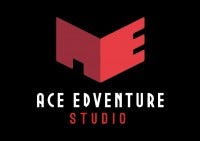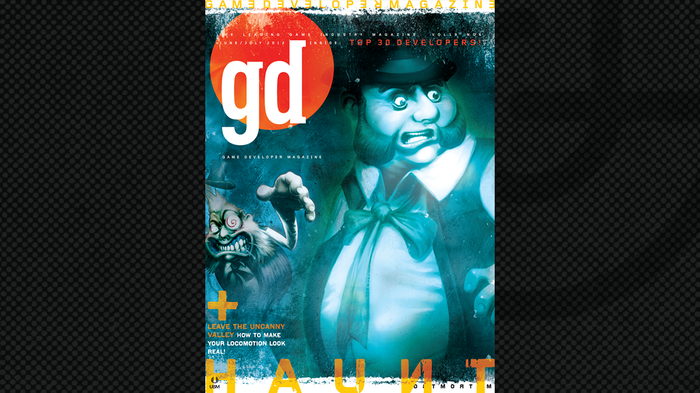
Featured Blog | This community-written post highlights the best of what the game industry has to offer. Read more like it on the Game Developer Blogs or learn how to Submit Your Own Blog Post
Trust and Reasonable Expectations – The Currencies of Getting Funded on Kickstarter in 2016? Part II
In the first part of this piece, we talked about the first five aspects of what we feel are most important to running a successful Kickstarter campaign. This time, we delve deeper into the people aspect of things and setting a funding goal.

In the first part of this piece, we talked about the first five aspects of what we feel are most important to running a successful Kickstarter campaign: research, clarity on your project, showing (off) as much of the good bits of your game/project, timing (and some luck), and adding value through rewards. This time, we delve deeper into the people aspect of things and setting a funding goal.
Without further ado:
VI. Outreach
Putting our Kickstarter campaign up was part of the hurdle cleared, the challenges of succeeding still lay ahead of us, which is where outreach took center stage even before our campaign went live.

The first definition of the word “Outreach” can also be interpreted as reaching out at arm’s length, figuratively speaking, to your own circles. Our own network built up over the course of developing our game were the first people we approached. In doing this, we tapped into resources most easily available to us consisting of friends, family, and associates aware of ChemCaper and its cause.
Doing so gave our campaign the fighting chance to grow organically. Word spread and thus began the influx of pledges once our campaign went live. A Kickstarter project’s chance of success is greatly improved when there’s a reserve of support at the ready, it’s also a good idea to keep some of your “big guns” for the middle-to-end stretch when the hype lulls.
With so many people to reach out to in a limited space of time, the tried and tested concept of launch parties are a surefire way of getting large quantities of people you know in one place to share your Kickstarter project thus giving rise to our ChemCaper Crowdfunding Pizza Party where we were able to raise over $5,000 in pledges in a night (bearing in mind that this was converted from MYR).
Tip: Don’t skimp on the food.
The second definition of the word “Outreach” then translates to expanding your reach further which involves corresponding with relevant game press and opinion leaders. There was an extensive guide written last month on earning press coverage for your game.
We focused our efforts on the international press to reach the western countries but didn't think to do the same with our neighbours here in the Asia Pacific. We later found out towards the end of our campaign that countries like Taiwan and China were seriously interested in ChemCaper. Certainly a lesson we’ll keep in mind for potential future campaigns.
We weren’t quite successful in our initial outreach efforts either. However, with our campaign picked as a “Project We Love” by Kickstarter within 36 hours of going live, word then started spreading on international waves. That’s when momentum of our campaign picked up, coverage and support came from unexpected places (to our pleasant surprise): we got interviewed by WASDradio.com and Maker Paradise, backed by Brian Fargo, Obsidian Entertainment (these are the guys we modelled our campaign after, like OMG), and GeekDad to name a few, then receiving support from guys like 3 Scientists Walk into a Bar. What more was the mutual support we received from other Kickstarter projects in the form of shout outs and vice versa really helped a bunch.

Without question, it’s important to talk about and share your project with the rest of the ground work done and always be willing to support other Kickstarter projects in the same boat. That’s what makes a community.
VII. Talk to your audience
With momentum and hype carrying a campaign, your Kickstarter page becomes somewhat of an all-in-one PR portal. Articles on social media emphasize myriads of ways to engage your audience – it takes time and patience but it’s an important part of building a community of advocates.
That being said, our Kickstarter page became somewhat of an engagement godsend for us with the responses that came in from people. Regardless of whether they were messages of support or queries (and the occasional heckle), it was a fantastic avenue to build unadulterated connections with our audience in a short space of time. Humanizing this process goes a long way.
Apart from responding to incoming conversation, being owners of your campaign it’s best to start and steer the conversations. That can come in the form of Kickstarter updates. These were opportune moments for us share more intricate details about ChemCaper like its lore, how we’re translating the textbook into lessons you can learn from the game, or a simple show of gratitude.

VIII. Be real about your funding goal
While we know what ChemCaper is doing for education is significant, that doesn’t necessarily equate to seven-figure fund goals. Based on our earlier research and the stats, there was an increasing number of failed Kickstarter video game projects in 2015. We looked at it from the perspective of relationship and trust building: it’s a tall order asking someone you barely know for a favor without first establishing a relationship.
To us, running our first Kickstarter campaign as a first-time game developer without a prior track record is something like building new relationships with hundreds, if not, thousands of people. So we felt it best to ease into this sphere with a modest funding goal of $50,000 to port ChemCaper to PC. Should it have been 3 years ago when we first started this from scratch, our goal would’ve been quite different. Nonetheless, it’s important that the goal is attainable given the scale of your game and set yourself up for success. It’s also easier for backers to commit when the goal is reachable.
It’s when you’ve built credibility with your community while it continues to grow that larger funding goals become more feasible. Such as in the cases of runaway successes like Exploding Kittens and Torment: Tides of Numenera for example, both of which had names with years of longstanding rapport with their respective communities behind those projects.
On a side note, what does make hitting your funding goal easier would be reaching out to people or communities who resonate with your game, which should fall under your outreach plan as mentioned above.
Conclusion
To conclude this series, Kickstarter is essentially show-and-tell school project for grownups… with the exception that you’re also asking for money to fund it. It’s certainly not easy, but the concept of clarity and building that trust between you and your audience is simple (and much needed). Give them everything they need to know and connect with them any way you can. Set reasonable expectations for both you and your audience.
Most importantly, give it your best shot. It’s not the end of the world if your Kickstarter campaign doesn't work out at first, you can always make adjustments and come back a success. Maybe a different crowd on other platforms like Indiegogo or RocketHub is what’s needed to turn your crowdfunding effort into a success, or something like Fig.co that has a vastly different approach to funding.
Whichever you choose, we wish you the very best in your crowdfunding project. Feel free to get in touch with us through the comments below or [email protected], we would be more than happy to support your project in any way we can. If you're going to be at GDC 2016, feel free to drop by the ChemCaper booth (#330), we'd be stoked to meet you!
About the Author
You May Also Like









